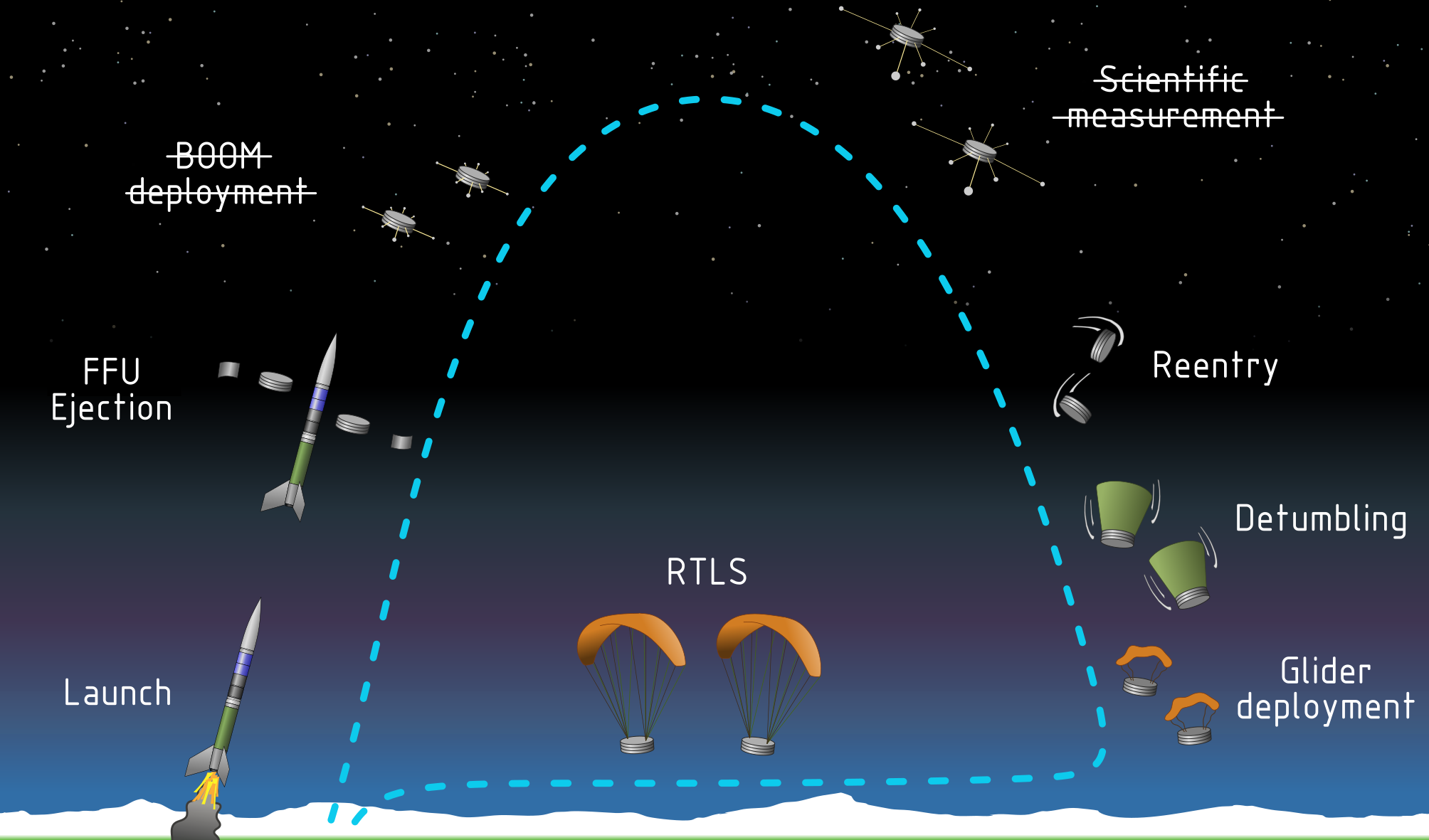BOOMERANG
BOOMERANG stands for nonBOOM-deploying Experiment with a Return-to-launch-site Autonomous Non-propelled Glider.
BOOMERANG is a multinational team of students from KTH Royal Institute of Technology in Sweden united in their shared interest in aerospace research and challenges. The aim of the project is to develop a functioning and modular recovery unit that can return free-falling research probes to defined coordinates with the help of an autonomously controlled paraglider. With the help of this development, future research projects in the field of plasma physics at KTH will be carried out more cost- and resource-efficiently.
Normally, the Free Falling Unit is landed using a parachute and retrieved via a costly helicopter search. The innovative vision for BOOMERANG is to design a deployable glider solution, enabling autonomous gliding flight back to the launch site.
The experiment has been selected as part of the REXUS/BEXUS programme and is planned to launch in Kiruna in the spring of 2024.
About
BOOMERANG is KTH’s latest application to the REXUS/BEXUS student programme. The REXUS/BEXUS programme is realised under a bilateral Agency Agreement between the German Aerospace Center (DLR) and the Swedish National Space Agency (SNSA) and allows students from universities and higher education colleges across Europe to carry out scientific and technological experiments on research rockets and balloons. Usually each year, two rockets and two balloons are launched, carrying up to 20 experiments designed and built by student teams. Experts from DLR, SSC, ZARM and ESA provide technical support to the student teams throughout the project. REXUS and BEXUS are launched from SSC, Esrange Space Center in northern Sweden.





